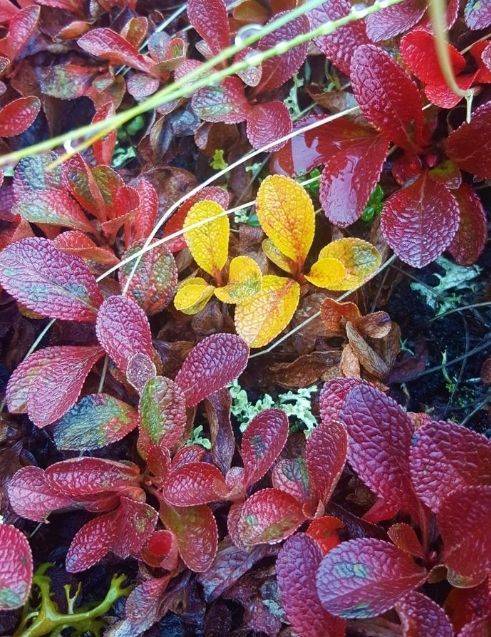Black Bearberry
- Iñupiaq name: Kavlaq
- Family: Ericaceae
- Scientific name: Arctous alpina
- Distinguishing characteristics: Low matted, woody shrub 2-4 inches tall. Leaves are thin and leathery, slightly serrated margins, green with reddish edges. Leaves turn red in the fall. Flowers are white to greenish white and bell-shaped, appearing similar to those of the blueberry. Berries are black.
- Similar species: Black bearberry can be frequently confused with red bearberry, as their leaves look almost identical. This may sound silly, but to tell them apart, just look at the berries! Black beaberry plants produce black berries, while red bearberry plants produce red berries. Bearberry can also be confused with blueberry, kinnikinnick, lingonberry, and sometimes the poisonous bog rosemary because of their similar flowers. To distinguish them all, check out their growth form: bearberry is a very low growing, almost creeping shrub, while blueberry and bog rosemary are taller and more classically "shrub-like".
- Habitat: Dry tundra and rocky areas.
- Best time to harvest: Fall
- Uses: Black bearberries are typically made into jam and used to remedy kidney or bladder problems.



Photos courtesy of the Grand Valley State University Arctic Ecology Program
